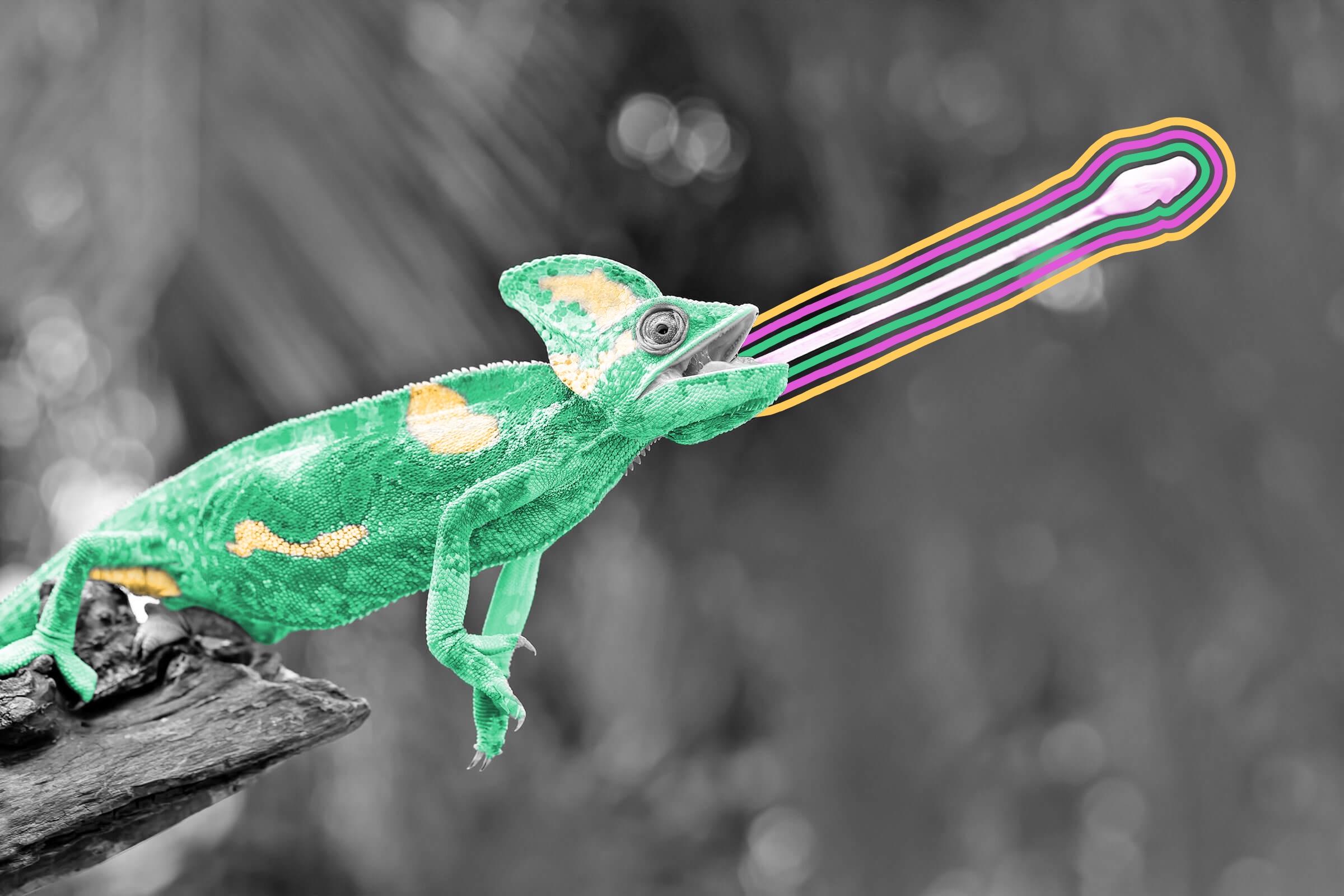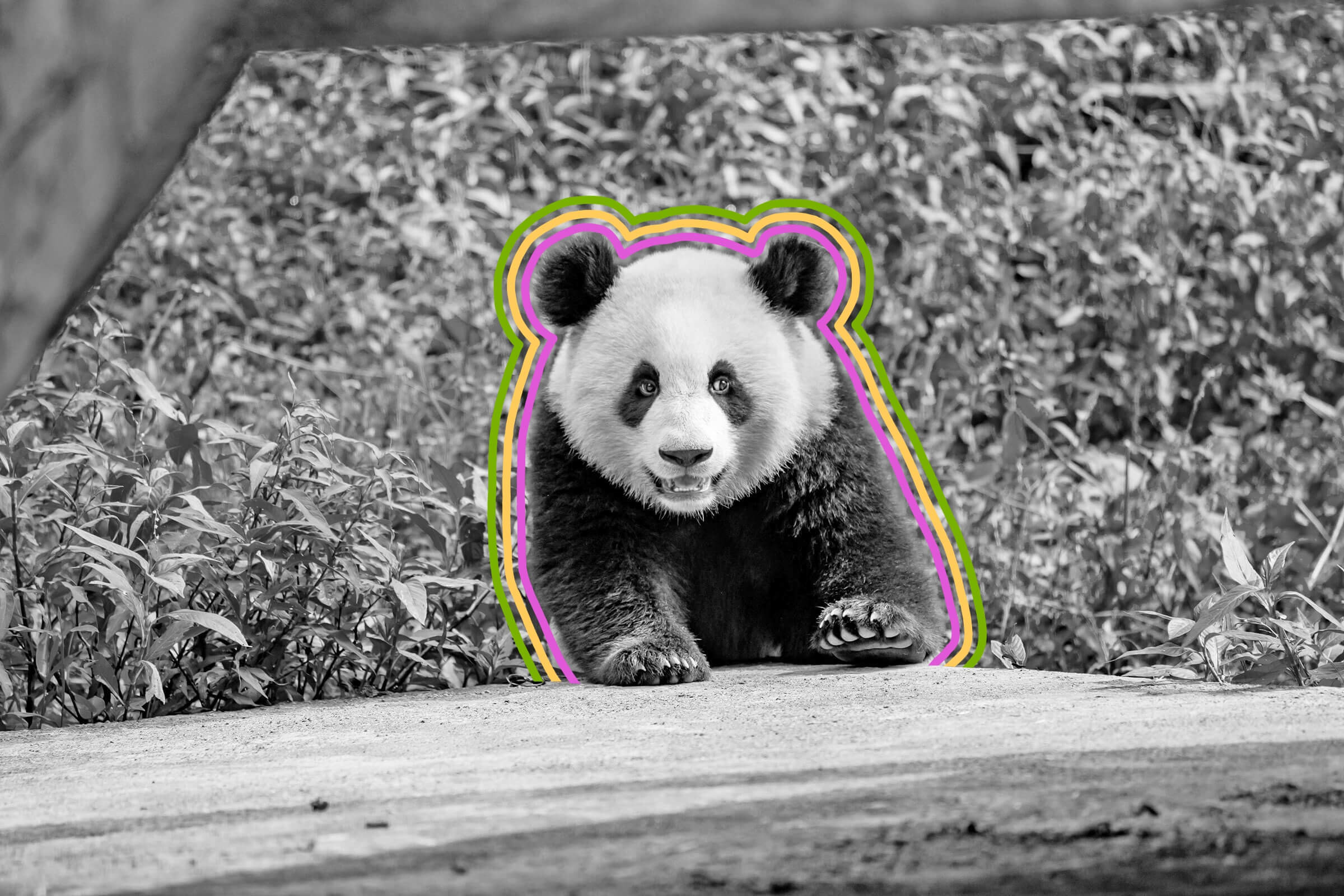
Chameleon tongues are about twice the length of their bodies.
Although many people tend to focus on the chameleon’s ability to change its color (both for camouflage and to attract — or warn — potential mates), this amazing lizard’s tongue is an often-overlooked wonder. First, it’s the fastest “gun” in the animal kingdom: It can go from zero to 60 mph in one-hundredth of a second, something that the world’s fastest cars could never dream of achieving. But another surprising attribute of this incredible muscle is that it’s twice as long as a chameleon’s body on average — a handy feature when sneaking up on unsuspecting prey. Translated into human biological terms, that’s the same as a person having a 10- to 12-foot-long tongue.
So how do chameleons, which are not particularly large lizards, keep this long tongue in such a small mouth? Well, scientists have discovered that a chameleon’s tongue contains elastic tissue that allows them to effectively store this secret weapon “folded up like an accordion,” in the words of National Geographic. When hunting prey, muscles contract in the mouth, similar to pulling back the string of a bow, and once that tension is released, simple physics takes over. The chameleon’s tongue propels forward with blink-and-you’ll-miss-it speed in a process scientists call “elastic recoil.” Then, a super-sticky, viscous fluid at the tongue’s tip ensnares the whiplashed insect, and the recoil returns the freshly caught meal to the chameleon’s mouth. Yum.
While their pincer-like feet, super-long tongues, and color-changing camouflage already make them pretty otherworldly, a chameleon’s vision is also something special. Chameleons can independently move each of their eyeballs, giving them a 360-degree view of their environment. Chameleon eyes also work like a telephoto lens, giving them the ability to zoom in on potential prey. This highly unusual visual system aids these fascinating lizards in catching food, avoiding predators, and mating. In other words, a chameleon’s eyes are perhaps the ultimate evolutionary superpower.

